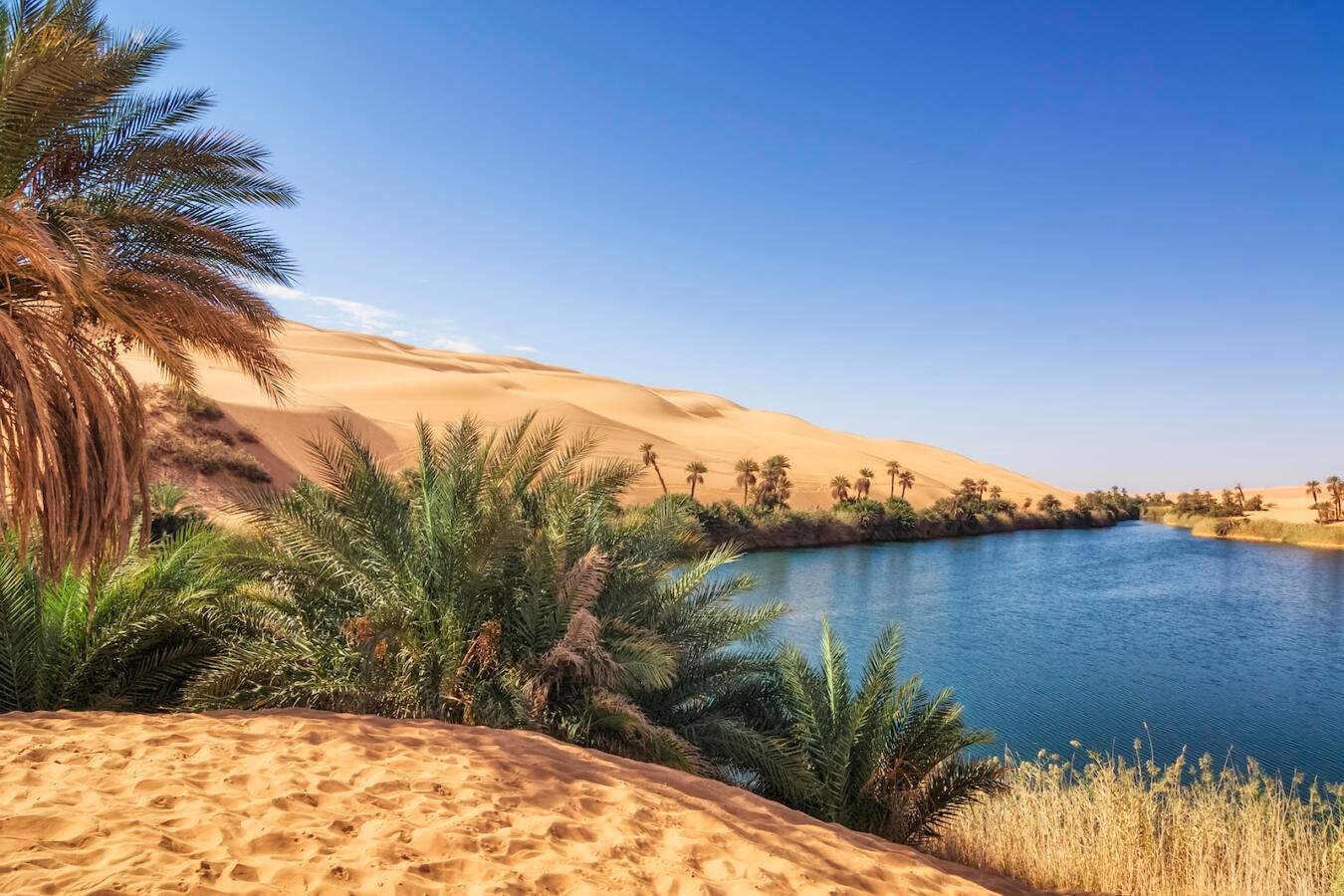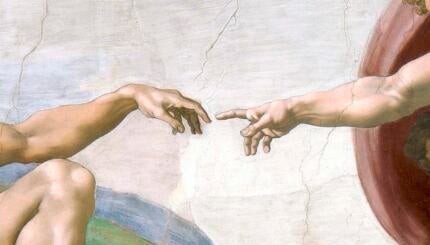Around this time of year, according to the Book of Exodus, the Israelites arrived at an oasis called Elim (Exodus 15:27). After their journey past Marah, the place of bitter waters, we can only imagine this place with 12 springs and 70 palm trees came as a welcome relief. Perhaps they rested and recovered from the long and arduous journey. Perhaps they began to integrate all that had happened. Some legends imagine that God created Elim at the beginning of the world in exactly the right form so that it would be available to comfort the tired and thirsty Hebrews.
Tradition holds that a miracle occurred at Elim. Originally, there was only enough water to support the palm trees, but when the people arrived, the springs gushed forth with enough water for all. The medieval commentator Rabbeinu Bachya notes that the word elimah (“toward Elim”), if the letters are rearranged, becomes Elohim (God), and explains that the people were able to reach a new spiritual level in that place.
More than most biblical places, I have tried to imagine what Elim might be like. The word itself means terebinths, a type of tree native to the Mediterranean, or perhaps, divine beings. Taken together, this implies a mysterious grove that touches the transcendent. The number of trees and springs is significant as well. The Midrash claims that the 12 springs echo the 12 tribes, and the 70 palm trees stood for the 70 elders of the Israelite tribes, implying that the trees and the people are intrinsically connected.
The healing powers of Elim are directly alluded to in the Torah. The verse immediately prior to the brief story of Elim includes the phrase: “I am the Eternal your healer.” Using the interpretive principle of smichut parshiyyot, or juxtaposition, we might infer that Elim is a place of healing. And we know that being around trees has a positive effect on people, hence the Japanese practice of forest bathing.
With your help, My Jewish Learning can provide endless opportunities for learning, connection and discovery.
Indeed, there may be a hidden healer at Elim. Rabbi Sylvia Rothschild notes that the journey from Marah to Elim may hint at the name of Miriam, which means “bitter sea.” Likewise, legal scholar David Nimmer points out that the word t’marim, dale palms, becomes Miriam if we remove the first letter. And there is a longstanding Sephardic tradition that Miriam was a healer. We might imagine Miriam singing her songs and dancing her dances not only once by the Sea of Reeds, but many nights under the trees at Elim, while the people bathed their feet in the cool springs.
I recently had the opportunity to teach a session on Elim at a Zoom event organized by the Academy for Jewish Religion rabbinical seminary. Another presenter, Bibliodrama founder Peter Pitzele, invited participants to imagine themselves as the Hebrews at Elim and to split into groups and interview one another about their experience. In my group, it was clear that after two years of a pandemic, many of us could identify with the Hebrews who had finally found rest but were still processing their trauma. We spoke of loss, depression, anger and lack of agency. We also spoke about the beauty of Elim and the joy, freedom, and leisure the Hebrews must have experienced there. We found our imagined visit to Elim had given us a sense of replenishment and wonder.
How do we go about creating the wondrous respite of Elim? A place to breathe, delight in community, and find the peace that allows us to persevere? We already have Shabbat and festivals, and daily moments of prayer and reflection. And yet, we are often so rushed and overworked we barely have time for meaningful relationships, for time in nature, for play. And with our interactions limited for so long by the pandemic, I wonder: Have we had time to integrate our experiences? Have we had time to witness one another?
I’m grateful for all the Elims in my life. But still I find myself longing for an enchanted Elim of springs and groves where we can meet one another and slow down, as the Hebrews did following their journey across the sea.
A Jewish playwright of the second century BCE, Ezekiel the Tragedian, wrote that the Hebrews sighted a huge multicolored bird at Elim. Scholar Eliezer Segal believes this bird was a phoenix, the mythical bird said to appear at times of great change. Maybe our time, too, is a time of the phoenix. If so, may we find moments of Elim amid the transformations to come.
This article initially appeared in My Jewish Learning’s Shabbat newsletter Recharge on April 30, 2022. To sign up to receive Recharge each week in your inbox, click here.



